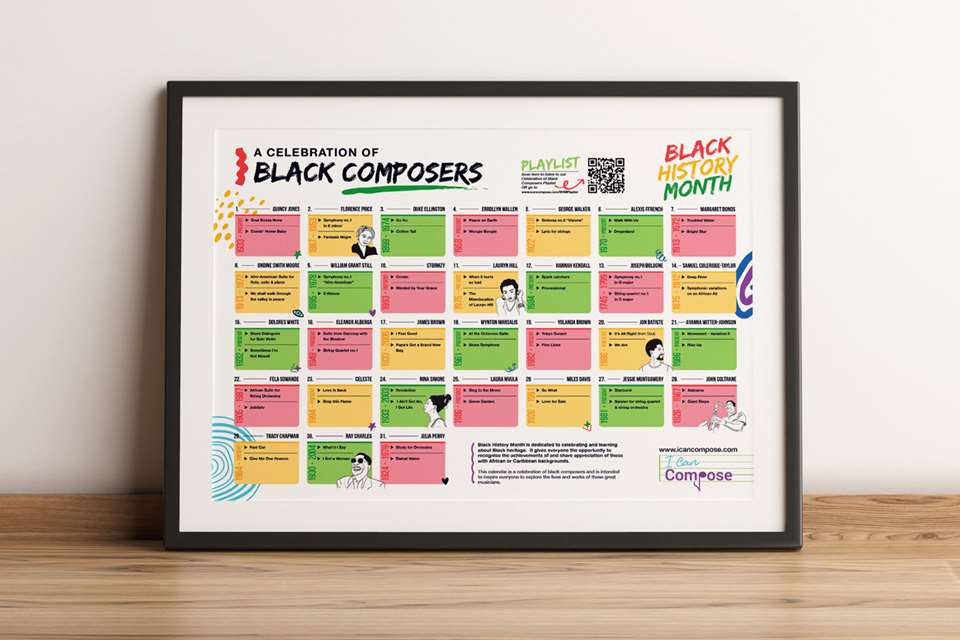Design flaws in music teaching materials and how to fix them
Adam Hockman
Monday, August 1, 2022
Whether you're a classroom, instrumental, or vocal teacher, you probably use teaching materials in some areas of your work. Practice and performance consultant Adam Hockman identifies two common design flaws found in music teaching materials and offers tips on making your resources work better for you.

Billionphotos.com/AdobeStock
When you teach students across ages and skill levels, it's easy to get overwhelmed by their different learning needs and interests. In any given music classroom, you'll see as many differences among students as there are students. To meet the challenge of helping each one to learn, you likely rely to varying degrees on published books, flashcards, or material websites. Pre-made materials are convenient and relatively low effort, but quality varies, which ultimately affects learning outcomes. One student easily completes theory worksheets and masters the target concept, while another student barely completes four or five examples on that same worksheet without heavy teacher support.
Where's the disconnect?
When we have some students who excel in music lessons and others who don't, we tend to blame the student or their background – the family has no structure at home; she won't practise; he doesn't care about the homework; they have ADHD, they can't focus. These narratives are of little use to teachers, since they're factors you can't change. There's only so much a music teacher can do when they see their student for a once-weekly lesson – tackling entire family dynamics or learning challenges is not one of them.
What's the alternative?
Rather than blaming students and their inability to master concepts or skills, start by inspecting the quality of your teaching materials. Again, it's convenient to reuse the same books and activities with all students, but not all materials provide sufficient support and practice to move learning to the next level. Instructional designers and behaviour scientists have researched and devised learning principles that promote skill acquisition and retention. Of all those principles, there are two that many teaching material designers don't observe. Grab some of your own often-used teaching materials and see if you can spot these two design flaws.

© PUHIMEC/ADOBESTOCK
Design flaw 1: Teaching concepts and vocabulary with only a few examples
To learn any concept or vocabulary in a meaningful way, a student needs exposure to a range of examples of that concept or vocabulary. In a listening activity, for example, you may want to teach the concept of playfulness. If you have a student listen to an excerpt with only a solo flute demonstrating a playful melody, the student may come to learn that flutes are playful or that the specific melody is what makes it playful, rather than learning the broader concept. Those types of lessons can lead students to walk away unable to generalise the playfulness concept to other passages.
The same is true of teaching a concept with visual material, like written harmonic intervals. A theory worksheet may only provide a couple of examples (for example, major sixths across starting pitches) all presented on the treble clef. Some students are able to move through such a worksheet and learn the concept, but many others aren't, because they haven't encountered a range of examples across notes, key signatures, and clefs (if appropriate). It's those students who focus more on finishing the worksheet rather than learning the content.
What to try instead: Each time you introduce a new musical concept or vocabulary word, present a range of examples to account for the entire concept. In the case of our listening exercise (playfulness), you'd want to play multiple excerpts for the student that demonstrate the quality of playfulness. Each excerpt would vary the instrumentation, tempos, dynamics, length, and so on. After students listen to the excerpt, you can point out what makes it playful, and what doesn't. When you show a range of examples, students start to see that it's not just the flute versus another instrument that makes something playful, but rather timbre, styling, or multiple features. This idea also applies to our theory example of teaching intervals. Since intervals occur across clefs, pitch frequencies, and key signatures, you want to make sure all of those features are presented in your instructional materials.
Accomplishing this might require you to mix instructional materials from different publishers or websites, or create some of your own. This higher upfront effort often has longer-term payoffs – you can reuse your curated materials with a wider group of students and have greater success.
Design flaw 2: Teaching concepts and vocabulary without non-examples
Once you've found materials that offer a range of examples, it's time to turn to including non-examples into your teaching demonstrations and practices. A good non-example is something that closely matches the example of the concept or vocabulary you're teaching but misses one or more features of the targeted concept. Non-examples are as essential to teaching as examples are. Students understand a concept when they can determine what is and is not an example of what you're teaching.
What to try instead: Back to our theory example. If you had a task focused on teaching the interval of a major sixth, you would want students to look at a range of examples and non-examples, and practise identifying which one is and is not a major sixth. In this case, your non-examples might include minor sixths, major sevenths, or minor sevenths. These non-examples are similar to the major sixth, in that they have about the same distance in notes on the staff, but they don't meet the rule of a major sixth. Here, students can go through a series of items to determine which ones are examples (major sixth) and which aren't (non-examples).
In the case of our listening example, you would have students listen to non-examples of playfulness. For instance, after playing the solo flute excerpt that demonstrated playfulness, you could play a serious excerpt with a solo flute. Between that example and non-example, students can tune in to the features of what makes it playful and what doesn't.
You'd be surprised what using non-examples in your teaching can do for your students. It helps them learn concepts and correctly apply them across new examples they encounter in the future.
Getting started
I hope you will look at your own materials and find some areas where you can increase the number of examples and non-examples you provide for anything you're teaching. Next, consider taking one concept that students struggle to learn and apply some of the above. Track your experience and continue to refine your materials over time.





